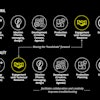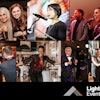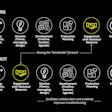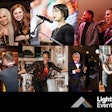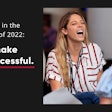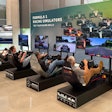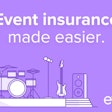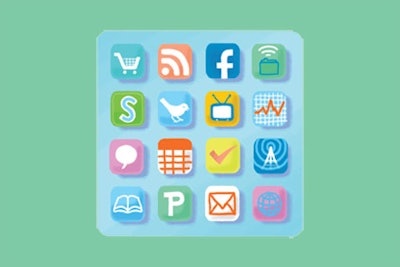
As constant advances in technology are changing the way we communicate and do business, they’re also providing event professionals with new ways to boost attendance, keep guests engaged, save money, simplify planning, or just look really cool. To help you get up to speed, here is a look at the most recent and relevant developments that could help improve your performance and results.
Giving In to Twitter
Last year saw event planners everywhere drink the Twitter Kool-Aid. And if you weren’t among them, you probably heard plenty about its potential as a professional asset. Now, after Twitter reached more than 100 million users earlier this year, marketers are looking even more closely at the long-term value of 140-character musings.
“One of the best uses of Twitter is for meetings and events,” says Jessica Levin, a technology enthusiast and New Jersey-based event marketer at Seven Degrees Communications. “It’s the quickest and easiest way for people to connect, promote, share content, and provide commentary on the event itself.”
Twitter is just a bare-bones channel of communication Signing on and taking a few moments a day to contribute to the conversations that matter to you—whether for promotion or feedback—is all it takes. Communities of users following topics relevant to you are now firmly in place: The #eventprofs hashtag gets hundreds of posts per day, and industry experts and media outlets have growing followings. (Certainly you follow @BizBash_News, right?)
The big allure for many event professionals is that it’s all just as valuable on site. Guests’ tweets can be used to get real-time feedback about a party or meeting, showcased on monitors to encourage others to contribute to the conversation, or used to simulcast a conference for people who couldn’t make it to the physical event.
The April announcement of promoted tweets, a way for the Web site to generate revenue, could also work to some users’ benefit. Under the new model, paid tweets will see higher placement in search engines. Paying for tweets about an event could earn you more traffic and followers.
Further Reading:
Twitter for Meeting Planners: How to Make It Work for You [The Speakers Group]
Twitter Has a Business Model: 'Promoted Tweets' [AdAge]
Event Security: The Twitter Effect [BizBash]
Google Wave
One of the latest free applications offered by Google could change the way you work with other people. An amalgam of email, instant messaging, wikis, and social networking, Google Wave is a collaborative computing platform that works on any computer with an Internet connection, and you probably already know someone who’s used it to plan a meeting or event.
“If meeting planners are to truly adopt technology and digitize their business, they must stop using email as their communication form for planning meetings,” says Washington-based event and technology consultant Corbin Ball. “You never know if you’ve got the current version of a document. That leads to real problems, and Google Wave provides an opportunity for changing that paradigm.”
Owner of Corbin Ball Associates, Ball was among the first to tout Wave’s potential for the event industry. Planners, like anyone, can use the program as a singular destination for the early stages of a project, and add photos, maps, contact information, and text as necessary. And because the program keeps a record of the evolution of the document, nothing can ever be permanently deleted. You can invite as many individuals as you like to contribute, and each collaborator’s additions are automatically attributed. A polling function even allows users to vote on all the variables—from the date of a meeting to the menu options from a caterer.
Google Wave is still in preview mode right now—you have to be invited to use it—but Google plans to launch it publicly later this year.
Further Reading:
Google's Wave Overview [YouTube]
Google Wave in Action: Real-World Use Case Studies [Lifehacker]
Transparent Registration
Getting attendees out of town—or out of their offices—for a conference can be tough. Before committing, many people want to know who else is coming. Along with speakers, sponsors, and programming, the names and number of peers who register can be the biggest selling point. So why do so many events not tell potential attendees who else will be there?
“People want to go to conferences to see each other, whether it’s people they already know, peers they want to meet, or connections they only happen to know online,” says Robert Swanwick, a Maryland event consultant and founder of Speaker Interactive and Twebevent.
Some registration vendors are already making this happen. Cvent, Certain, and EventBrite are some of the event management programs that will include lists of people who’ve already signed up as part of online registration. The producers behind April’s Chirp conference in San Francisco, an official summit of Twitter developers, published a continually updating list of attendees with EventBrite, and even included links to their Twitter pages and Web sites.
“Ideally, registration like this will show you the connections you have to other registrants on Twitter, LinkedIn, and Facebook,” Swanwick says. “If you see that you already have connections to 20 people, that’s a pretty powerful impetus.”
It’s also a great way to advertise an event. Including links for attendees to tweet or post to Facebook about an event can get a conference seen by their friends and followers.
Further Reading:
Use Social Media to Boost Your Registration [MPI]
How to: Plan and Promote Events With Social Media [Mashable]
Online Communities
Tapping into Web-based communities has been a top priority for marketers since Facebook began to dominate Internet usage. Now, more brands and events are setting up niche social networks, and companies such as Crowdvine, Pathable, and Zerista are helping clients build custom communities around projects as small as internal conferences and as large as festivals.
Experts advise carefully measuring expectations before creating your own social network. “What people need to focus on is creating a longer-term community around their audience,” Swanwick says. “These communities take a long time to plan, set up, and feed; then they tend to fizzle out pretty quickly. If you want to incorporate social networking in a business, you have to do it year-round.”
Swanwick thinks bigger and more like-minded audiences are the most likely to stay active in their communities. Associations, trade shows, and large companies, in particular, should focus on permanent social integration into their Web sites, so each event motivates the audience to return to the same place.
But communities don’t have to be expensive custom buildouts. Creating groups within existing social networks can work if you’re willing to do the legwork of encouraging dialogue. “If you don’t have the money to make your own, doing something within the parameters of Facebook or LinkedIn is always an alternative,” Ball says. “You don’t have the control and you can’t manage the data the same, but people can network just as well.”
Likewise, the most basic, short-term approach to creating a community is to encourage attendees to use a hashtag when tweeting about an event, like #Tribeca during the Tribeca Film Festival or # FNO09 for last year’s Fashion’s Night Out retail promotion.
Experts advise planners not to get hung up on making a social network for a one-time gathering. “The event should be a catalyst to energize the community,” Swanwick says. “Post things they like and keep them interested and interacting, but don’t get hung up on making it about the one moment.”
Further Reading:
Pre-Event Community Building [Future Business]
7 Ways to Use Social Media to Create Buzz-Worthy Events [Convince & Convert]
How to: Build Community on Twitter [Mashable]
Convenient Videoconferencing
For videoconferences, high-end telepresence technology has a clear edge on Web cams. Unfortunately, the leap between these two methods of visual communication comes with a hardware and service price tag that starts at around $300,000.
But you don’t have to buy the technology to use it. Leading telepresence provider Cisco has expanded partnerships with Marriott and Starwood hotels in the last year to offer videoconferencing suites at low hourly rates. Groups of as many as 20 can gather in specially designed conference rooms that sync with colleagues in affiliated hotels in the U.S. or in international outposts.
By the end of the year, Marriott plans to have the technology in 25 hotels and Starwood in 10, in cities like New York, Washington, and San Francisco. Packages vary, depending on the size of the meeting.
Further Reading:
Q&A With Cisco’s Laura Ipsen [VentureBeat]
Can't Make That Meeting? Send a Robot [USA Today]
Audience Response Technology’s Move to Mobile
Instead of placing handheld devices on every seat at a conference, lots of planners now rely on attendees to bring tools of their own. Text-in audience response has been commonplace for years, but the sudden ubiquity of Twitter has prompted many to start relying on that.
EventHive, a startup from a college student, culls audience tweets and combines them with polling technology to create an audience response experience that works for anyone who’s got a laptop or a Web-enabled phone. Participants don’t even have to download anything, merely go to the event’s designated site.
Twitter-based A.R.T. is happening more and more, but most think it will just complement the existing market. “I do think we’re going toward handheld devices,” Ball says, “but there’ll always be competition. Not everyone has a Web-enabled phone yet. Those [planners] who are serious about their audience polling will continue to use their own tools.”
One such tool Ball sees people being drawn to in the next year is the IML Connector, which comes out this September. The small handheld comes with a full-color screen, real-time interpretation tools, microphone, QWERTY keyboard, and portable PA system. It also looks a lot like a smartphone.
Further Reading:
10 Ways Social Media Will Transform Events in 2010 [EventCoup]
Handheld vs. Smartphone (Event Marketer]
Mixing Media
A Massachusetts company is taking advantage of consumers’ infatuation with the most popular and socially minded elements of the Internet—Facebook, Twitter, photo-sharing, and viral videos—by letting guests use them all as back channels for commentary at events, with large monitors showing what people have posted online related to the event.
Aerva offers clients such as Kodak, Yahoo, and Advertising Week software that encourages attendees to interact with the brand on custom digital signage. (These people can be guests at private events or consumers passing by public stunts.) The company helps event producers select any combination of ways for people to create and share content through their own profiles on Facebook, Twitter, Flickr, and YouTube, on displays as small as a flat-screen television or as large as a Times Square billboard.
Although seeing live streams of relevant text messages or tweets at parties isn’t a completely new concept, Aerva collects more than words. It combines aspects of social networking and content-distribution sites with text-in polling and photo uploads to ensure maximum participation. Catering to a wider audience of mobile-equipped guests means that none of your budget is spent on computing stations that often go untouched.
It also works as means for informal audience response. At a March conference for the American Association of Advertising Agencies, keynote speaker and Wired editor Chris Anderson deviated from his planned speech and engaged the audience when an Aerva display showed that many listeners disagreed with his stance on the iPad.
Further Reading:
Aerva Blog
Event Apps
Mobile applications aren’t just one of the biggest moneymakers in technology right now, they’re an important reason more than 50 million Americans are smartphone owners. In the event community, they can help trade shows and conferences stay free of paper and laptops while making it easier for attendees to explore, network, and stay on top of the schedule.
“Nobody wants another piece of paper or another badge around their neck,” says Clinton Bonner. “It makes all the sense in the world to deliver content straight to the user’s mobile.”
Bonner’s company, the Social Collective, develops social networks for conferences, and one of its goals is to make those networks friendlier for mobile applications. Bonner is not alone. FollowMe, QuickMobile, and My Mobile Meetings are all catering to the industry with custom software that attendees can download to their phones before or during events. Such apps contain everything from show floor maps to schedules and registration forms to local city guides.
Event-based apps offer more than just guides, though. Many come with wireless networking to allow attendees to exchange contact information by simply bumping their iPhones. When the guests return to their rooms at the end of the day, all of their new connections are stored in one place and easily synced to the contacts lists on their phone or computer.
Or, by simply snapping a photo of a bar code at a vendor booth at a trade show, event apps can save links to Web sites containing information that would otherwise have been printed on easily discarded handouts.
The practice is becoming more and more common, but it’s not the standard. Many planners chalk that up to the diversity in hardware, with attendees choosing among different brands. Plenty of these apps only work with one type of phone or another. But as the number of smartphone users grows, so will the number of non-model-specific applications, experts predict.
“Event apps need to be mobile agnostic,” Bonner says. “They have to work with iPhones, BlackBerries, and other smartphones, so you’re including the biggest audience. People’s phones are always on them, so you need to have your content there, and it needs to be branded.”
Further Reading:
Inspiration for Your Shiny New Event App [Interactive Meeting Technology]
5 iPhone Apps for Your Next Trade Show [Tradeshow Insight]
The iPad
Speaking of apps: We’re not even halfway into 2010, but the biggest tech story of the year will probably be the April launch of the iPad. More than just a shiny new toy, Apple’s touch-screen tablet computer could change the way you work on site, especially as software developers dream up event-specific applications.
“You can always tell who’s a planner at an event,” Ball says. “They’re carrying around a five-inch-thick three-ring binder with all the details. Tablets will be able to handle all that stuff to just make it a natural substitute.”
Ball thinks the iPad could be the thing to finally push the industry into the 21st century. “Meetings are all about portability,” he explains. “The reason we don’t have as much technology in meetings is because people aren’t carrying around their computers. But they will carry an iPad.”
The fusion of smartphone and notebook computer technology won’t just condense materials, agendas, and guest lists; with a little experimentation—and the inevitable development of some industry-specific applications—it could also make some jobs easier.
Intimate presentations could be delivered on the fly, in hotel rooms, or during a lunch break. At conferences, paperless surveys, registration, and note-taking could all be tackled on an iPad. Security concerns over multiple check-in stations at private parties could be reduced if staffers documented arrivals electronically, and each person’s iPad could show a continuously updated guest list.
For Apple skeptics, such technology isn’t limited to the media-friendly iPad. More than 50 unique tablets are expected to debut within a few months of the iPad’s launch.
Further Reading:
Corbin Ball's TechTalk Blog
13 Great iPad, iPhone and iPod Touch Apps For Event Planners [Conferences that Work]

